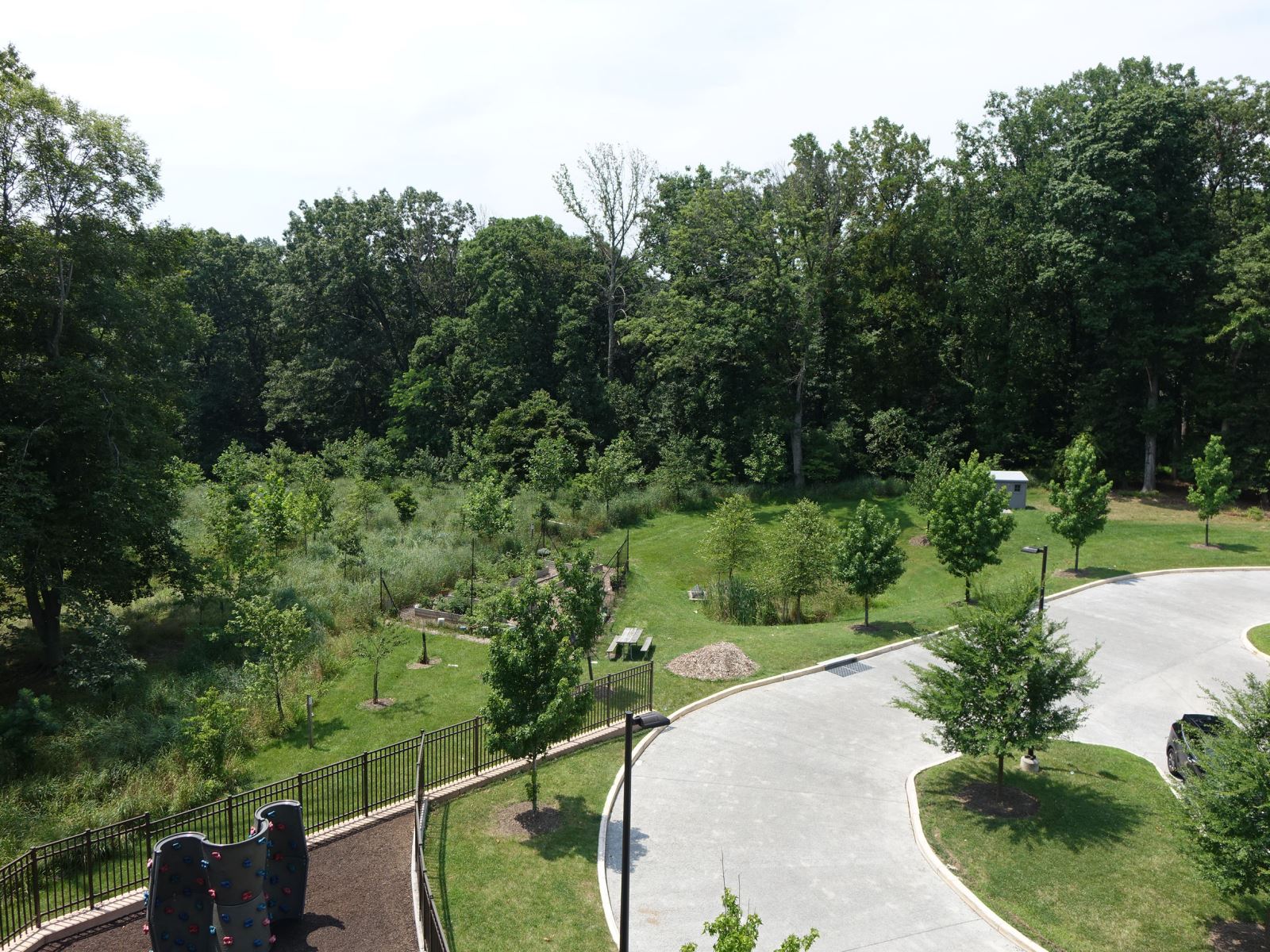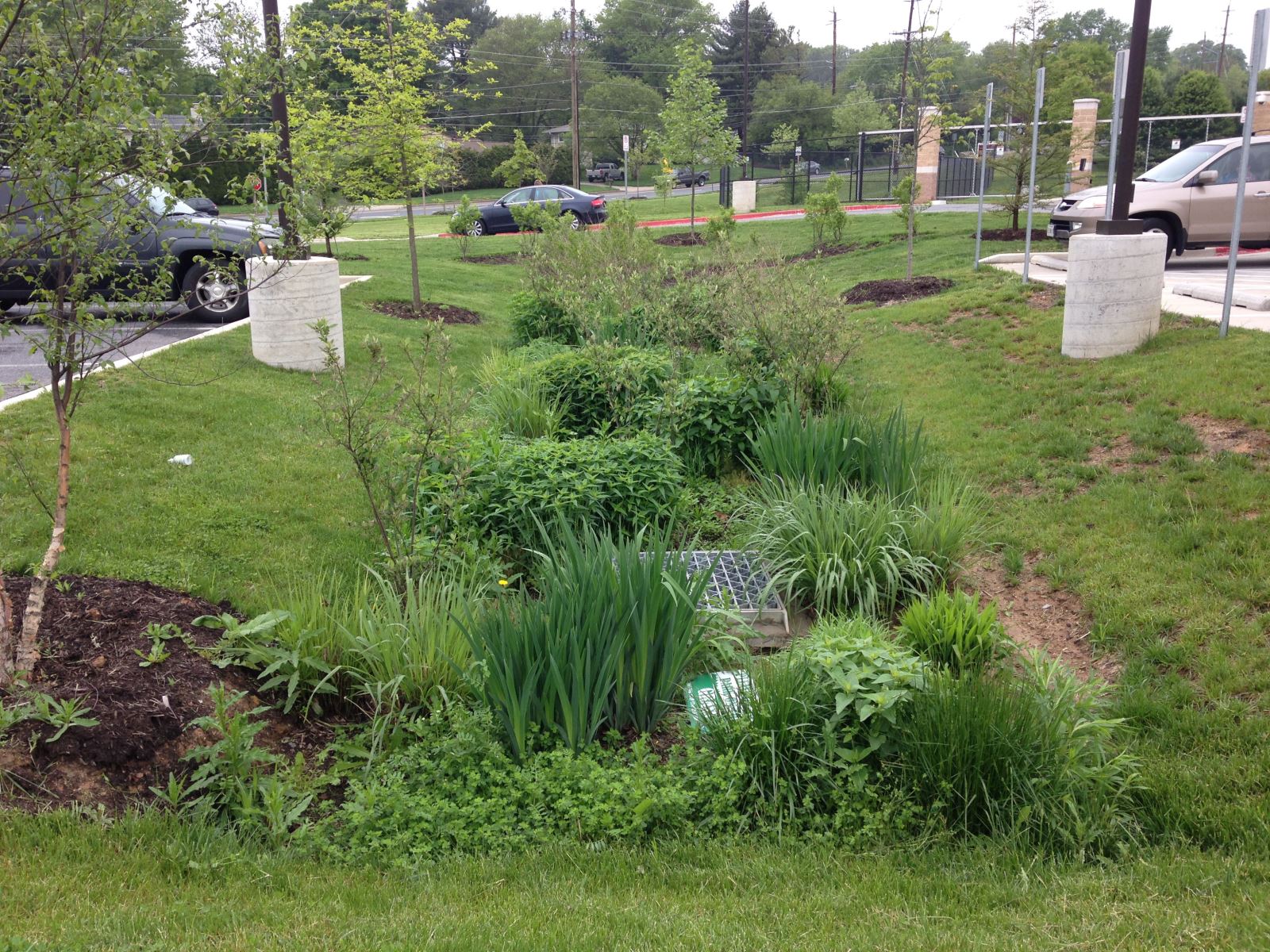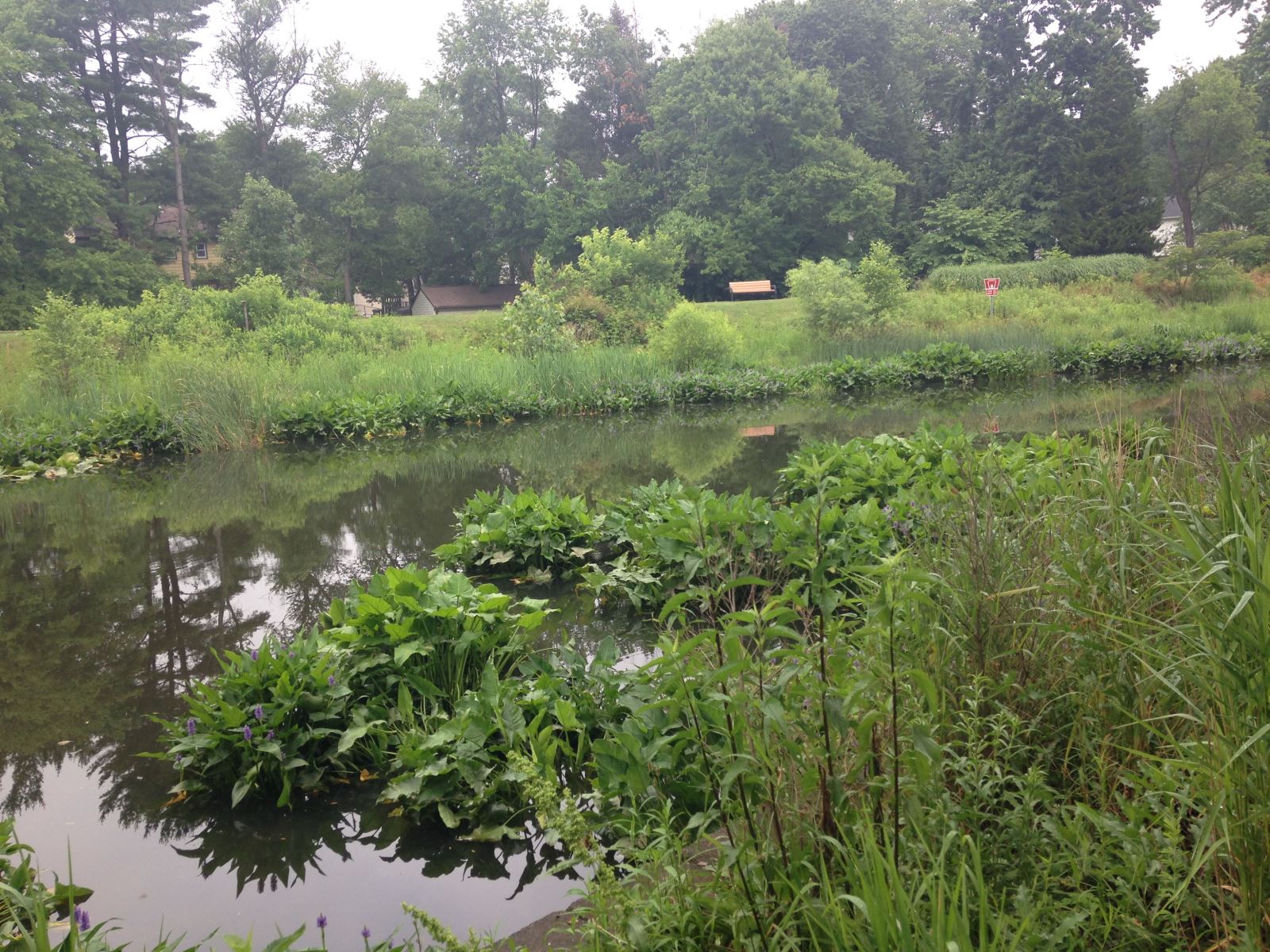Category Name
Rain Gardens and Stormwater Ponds
Media heading
Montgomery County protects local streams and rivers using rain gardens, native plant gardens, and other stormwater management techniques.
About
Stormwater is rain and snowmelt that runs over land and drains to streams, ponds, and rivers. In a natural landscape, such as a forest or meadow, rain and snowmelt filter slowly into the ground, working their way through the soil toward streams, getting filtered along the way. When we develop land, we replace natural landscapes with hard surfaces such as roofs and parking lots. Stormwater quickly runs off of these hard surfaces, heating up on hot days and picking up oil, tar, and other pollutants along the way. Water runs into storm drains that often pipe the water directly to a stream or river, causing flash flooding and water pollution.
How do We Treat Stormwater?
Media heading
One of the best ways to slow and filter stormwater is to treat it on site by using combinations of rocks, sand, soil, and plants to mimic natural landscapes. The goal is to replace as many hard surfaces as possible with permeable ones that allow water to seep through. Montgomery County treats all stormwater in new construction according to state and County regulations, capturing 90% of the average rainfall and removing 80% of pollutants. Additionally, the County installs stormwater treatment structures on older facilities that were not previously treated to today’s standards. Some of the stormwater treatments you can see at Montgomery County facilities include rain gardens, native plant gardens, bioswales, green roofs, and stormwater ponds. The County currently maintains more than 1,400 stormwater facilities on County property. We also capture and reuse rainwater at some of our green buildings.
Rain Gardens and Native Plant Gardens
Media heading
Rain gardens and native plant gardens (also called conservation landscaping) replace grass with native plants that slow and filter rain water and provide habitat for birds and butterflies. Conservation landscaping replaces the top six inches of dirt with conditioned soil that allows plant roots room to grow deep and thrive. Conservation landscapes are installed on flat or sloped land. Rain gardens are a bit more engineered. To build a rain garden, we create a depression to collect water, dig down at least two feet, and replace existing dirt with stone, sand, and rich soil – perfect for filtering pollutants. Attractive native flowers, grasses, and bushes top off the rain garden, providing important habitat for birds and butterflies while also slowing and filtering rain water. Rain gardens are designed to collect water and then drain it within a few hours, preventing mosquitoes.
Stormwater Ponds
Media heading
Stormwater ponds collect rain water that runs over land or into storm drains along streets and parking lots, preventing flooding and allowing pollutants to settle at the bottom, keeping them out of streams and rivers. These ponds have control structures to release water slowly. Well managed ponds are healthy and support fish, insects, and amphibians that control mosquito populations.
Green Roofs
Media heading
Green roofs absorb and filter rainwater, keeping streams and rivers clean. They insulate buildings and save energy. They typically include a root barrier, a drainage layer, 3-4 inches of a soil mixture engineered for water absorption, and low-growing plants that can withstand droughts and heavy rain. More...
About
Stormwater is rain and snowmelt that runs over land and drains to streams, ponds, and rivers. In a natural landscape, such as a forest or meadow, rain and snowmelt filter slowly into the ground, working their way through the soil toward streams, getting filtered along the way. When we develop land, we replace natural landscapes with hard surfaces such as roofs and parking lots. Stormwater quickly runs off of these hard surfaces, heating up on hot days and picking up oil, tar, and other pollutants along the way. Water runs into storm drains that often pipe the water directly to a stream or river, causing flash flooding and water pollution.

White Oak Community Center
Montgomery County’s Department of General Services makes every effort to conserve existing forests and to plant or preserve canopy trees native vegetation on County facilities. For example, at the White Oak Community Recreation Center in Silver Spring, we preserved forest on XX acres of the XX acre property, maintaining fish and wildlife habitat and protecting water quality in Paint Branch.
How do We Treat Stormwater?

White Oak Community Center
One of the best ways to slow and filter stormwater is to treat it on site by using combinations of rocks, sand, soil, and plants to mimic natural landscapes and to replace as many of the hard surfaces with permeable ones that allow water to seep through. Some of the stormwater treatments you can see at Montgomery County facilities include rain gardens, native plant gardens, green roofs, and stormwater ponds. We also capture and reuse rainwater at some of our green buildings.
Rain Gardens and Native Plant Gardens

Equipment Maintenance and Transit Operations Center
Rain gardens and native plant gardens (also called conservation landscaping) replace grass with native plants that slow and filter rain water and provide habitat for birds and butterflies. Conservation landscaping replaces the top 6 inches of dirt with conditioned soil that allows plant roots room to grow deep and thrive. Conservation landscapes are installed on flat or sloped land. Rain gardens are a bit more engineered. To build a rain garden, we create a depression to collect water, dig down at least two feet, and replace existing dirt with stone, sand, and rich soil – perfect for filtering pollutants. Attractive native flowers, grasses, and bushes top off the rain garden, providing important habitat for birds and butterflies while also slowing and filtering rain water. Rain gardens are designed to collect water and then drain it within a few hours, preventing mosquitoes.
Stormwater Ponds

White Oak Community Center
Stormwater ponds collect rain water that runs over land or into storm drains along streets and parking lots, preventing flooding and allowing pollutants to settle at the bottom, keeping them out of streams and rivers. These ponds have control structures to release water slowly. Well managed ponds are healthy and support fish, insects, and amphibians that control mosquito populations.
Green Roofs

Equipment Maintenance and Transit Operations Center
Green roofs absorb and filter rainwater, keeping streams and rivers clean. They insulate buildings and save energy. They typically include a root barrier, a drainage layer, 3-4 inches of a soil mixture engineered for water absorption, and low-growing plants that can withstand droughts and heavy rain.

